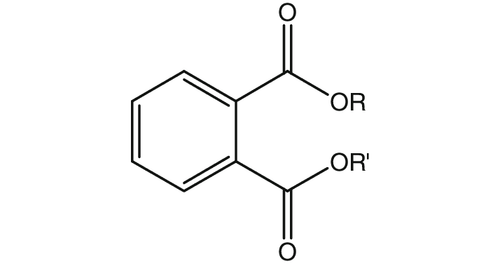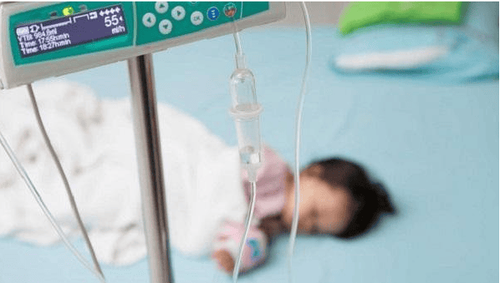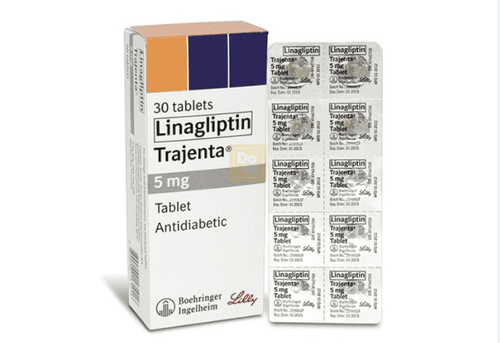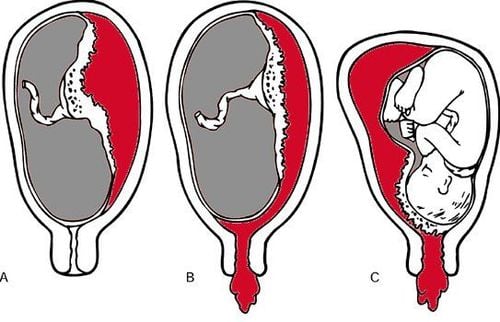This is an automatically translated article.
Phthalates are a group of chemicals used to make plastic more flexible and harder to break. Phthalates are widely used in polyvinyl chloride resins to manufacture products such as plastic packaging films and sheets, inflatable toys, blood canisters, medical tubes, and especially children's toys. So what are phthalates, are phthalates in children's utensils harmful?
1. What are Phthalates?
Phthalates are a group of chemicals most commonly used to make plastics more flexible and harder to break. They also act as a binding agent or solvent. Phthalates are also known as plasticizers, they are found in a wide variety of products and were first introduced in the 1920s as an additive in polyvinyl chloride (PVC) and some products. health care products, such as insect repellents.
Exposure to phthalates is common, and studies by the US Centers for Disease Control and Prevention (US.CDC) have found that phthalates are present in the majority of the population, especially in children. children and women of childbearing age.
Phthalates are found in a wide variety of cosmetics and personal care products (shampoo, perfume, nail polish, hairspray, tampons, etc.), vinyl flooring, mini blinds and wallpaper, raincoats, medical equipment and supplies (including blood storage bags and IV tubes), plastic tubes, shower curtains, plastic films and packaging for food, pharmaceuticals, lubricants and detergents.
Phthalates are thought to leach into food products through plastics found in food packaging and in manufacturing facilities; In 2013, researchers at the University of Washington reported that Phthalates were found in foods, especially in milk and spices.
Wildlife Canada scientists have discovered that Phthalates are widespread in the food chain and are found in the eggs of birds in the Canadian Arctic.

Cấu trúc hóa học chung của orthophthalates. (R và R' là các trình tự chung)
2. How do Phthalates enter our bodies?
Phthalates are all around us, and adults and children are more likely to absorb them. “Children are very vulnerable,” said Sheela Sathyanarayana, an assistant professor in the Department of Pediatrics at the University of Washington and lead author of the study looking at phthalate exposure through baby care products. when exposed to phthalates due to hand-to-mouth behavior, playing on the floor while the nervous and reproductive systems are developing strongly."
Here's how we're all exposed to Phthalates:
Ingestion. When babies suck or chew objects that contain plasticizers (such as pacifiers, squeeze toys), or children hold these toys and then suck their fingers, chemicals can enter the child's body. Because children suck and put objects in their mouths often, they are especially susceptible to ingesting phthalates. Trying to keep your baby from putting objects in her mouth is not a good solution, so it's one of the ways babies learn about their world, and it's developmentally important. Instead, parents can keep potentially harmful objects out of their baby's reach and ensure that toys and other objects put in their mouths are completely safe. Older children also ingest Phthalates when they play with things that contain phthalates and then put their hands in their mouths. Polymer clay is an example. These clays are often sold to children for use and are made primarily of PVC. We also ingest Phthalates when we eat food contaminated through certain food packaging or when we drink beverages from plastic bottles that leach the chemicals into the food or liquid. Absorb. Phthalates are found in many fragrance and cosmetic products, and they help stabilize fragrances, increase spread, and enhance absorption. So you'll find Phthalates in deodorants, nail polish (to help prevent chapping), hairspray (to help harden hair), perfumes, lotions, creams, and powders (including lotions). , cream and baby powder). The chemicals from these products can be absorbed through the skin and into the bloodstream. In 2002, a coalition of public health and environmental groups tested 72 branded, over-the-counter cosmetics for phthalates. They found that nearly three-quarters of the products contained Phthalates. And when the CDC tested phthalate levels in humans, it found the highest levels of Phthalates in women of childbearing age, presumably due to their use of cosmetics.
In a study published in the February 2008 issue of the Journal of Pediatrics, researchers at the Seattle Children's Hospital of the University of Washington and the University of Rochester found that babies who were applied topical products by their mothers Recent infant care products such as lotion, shampoo, and baby powder are more likely to have phthalates in their urine than babies whose mothers did not use these products.
Exposure to phthalates is also a common part of hospital stay. Many medical devices, such as catheters and IV devices, are made of PVC (polyvinyl chloride or vinyl) - even those used in the NICU and other child and newborn care areas . Because phthalates can degrade into devices containing stored liquids, such as blood, plasma, and intravenous fluids, the FDA in 2002 advised healthcare providers to avoid use bags, intravenous syringes, and other devices containing phthalate DEHP when treating premature infants and women carrying a male child. Accordingly, some hospitals are now removing phthalate-containing PVC from neonatal intensive care units.

Một số vật tư y tế có chứa phthalate
Inhale. Phthalates can be inhaled from dust or fumes from any product that contains vinyl, such as vinyl floors, vinyl seats (e.g. in cars), and some diaper changing mats. The generation of smoke by these products is called off-gassing. Of course, phthalates are also a concern for adults. In addition, phthalates can cross the placenta, so they can be passed to the baby during pregnancy when the mother is exposed to the substance. And they can be passed through breast milk, so it's important to learn how to limit a mother's exposure to protect her baby. Breast milk is still the best food for babies. Phthalates are not a reason to restrict breastfeeding, but they are a reason for mothers to read product labels to find out if they contain phthalates.
3. Can Phthalates Be Harmful?
The effects of phthalates on humans have not been studied extensively, but they are believed to be an endocrine disrupting chemical (EDC) that can alter hormonal balance and potentially cause problems. reproductive, developmental and other health issues.
The US National Research Council said that a 2008 risk assessment report found an association with reproductive and genital defects, lower sperm count, hormones disorder and infertility.
According to two recent Harvard studies, exposure to phthalates may increase the risk of miscarriage and gestational diabetes in pregnant women.
In infants and children, phthalates have been linked to allergies, male genital malformations, precocious puberty, eczema, asthma, lower IQ and ADHD. A 2010 study of New York schoolchildren linked prenatal phthalate exposure to impaired social functioning later in life. Last year, researchers in South Korea discovered, through a review of existing studies, a "significant association" between DEHP exposure and effects on neurodevelopment in children. .
Other studies have linked phthalates to other effects in adults. A Harvard-led research team concluded in a 2008 study that certain phthalate levels were associated with sperm DNA damage in men at an infertility clinic. The US Consumer Product Safety Commission said in a 2014 risk report that exposure to certain phthalates can cause adverse effects on the thyroid, liver, kidneys and immune system. . Some phthalates such as DEHP, which are among the most widely used, are classified as probable carcinogens by the US Environmental Protection Agency (EPA).

Phthalate có liên quan đến vấn đề dậy thì sớm ở trẻ
4. How can consumers limit all risks?
Most exposure to phthalates comes from eating and drinking foods that have resulted in the absorption of this chemical. Phthalates can also be inhaled through vapors from scented cosmetics or hygiene products that are absorbed through the skin. Because they are found in so many products, avoiding phthalates entirely can be difficult.
Minimize exposure by avoiding plastic food containers (plastics marked with a recycling code 1, 2, 4 or 5 are probably safest).
Use glass instead and never reheat food with plastic.
Check product labels, avoid anything with phthalates as ingredients.
When you use baby care products, choose products that are phthalate-free. Unfortunately, it's not always easy to spot from the list of ingredients in products. Manufacturers are not required to list phthalates separately, so they may be written under the term "fragrance".
Choose alternatives to canned foods, like fresh fruits and vegetables and those in glass containers.
Do not buy vinyl products (PVC, polyvinyl chloride), especially as those products will end up in your baby's mouth in the form of pacifiers, pacifiers or toys. Instead, choose items made from the most natural products possible. When you shop for plastic, look for ones made of polyethylene or polypropylene rather than vinyl or PVC.
When painting or using other solvents, make sure the space is well ventilated and your child is elsewhere. Most paints contain DBP (dibutyl phthalate) to give them better spreadability. You can look for natural paints that don't have this ingredient.
Choose bathroom curtains, raincoats, vinyl-limited furniture and building materials whenever possible. Chemicals released from these products send phthalates into the air and can be inhaled by your child or you.
Clean up. Phthalates can be airborne and in the dust in your home, so wet mopping can help remove this chemical.
Please dial HOTLINE for more information or register for an appointment HERE. Download MyVinmec app to make appointments faster and to manage your bookings easily.
References: babycenter.com, theguardian.com, fda.gov












